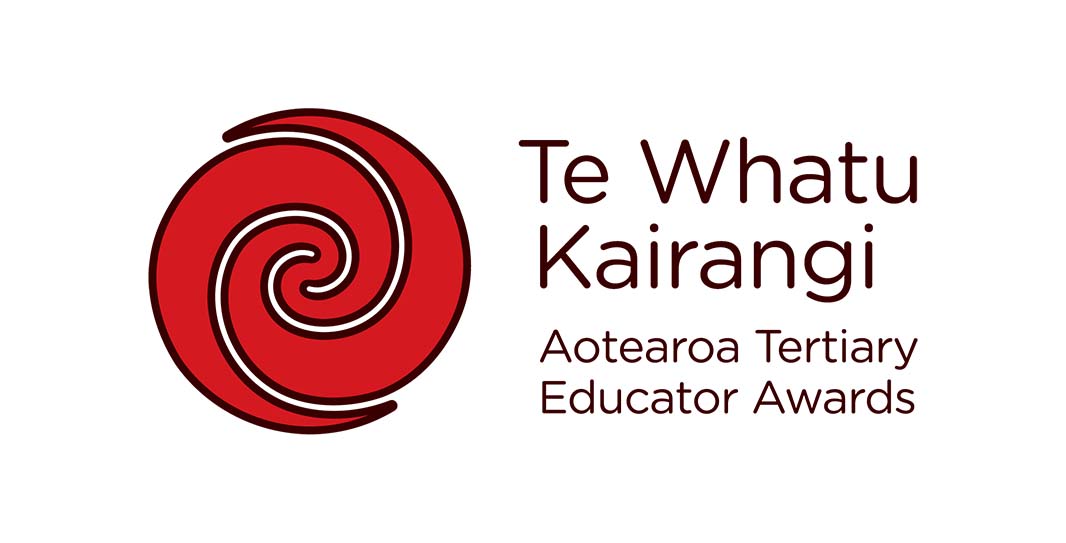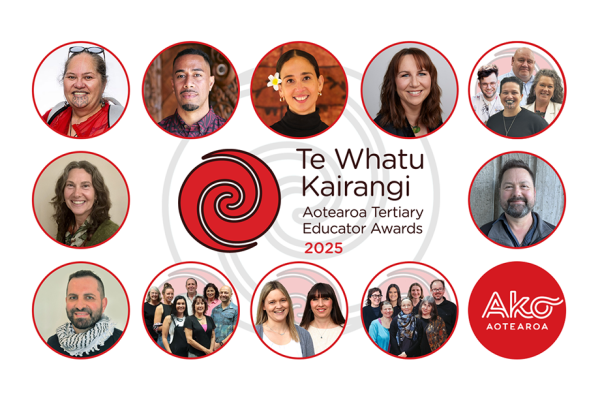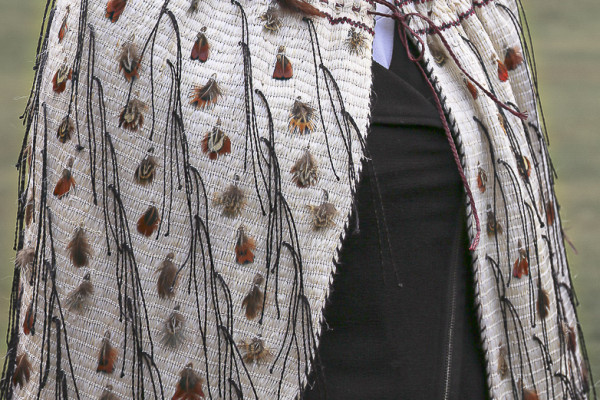Te Whatu Kairangi Frequently Asked Questions
Who can apply?
The awards are for tertiary educators in their broadest sense and may include those in a role such as teacher, facilitator, kaiako, assessor, trainer/employer, lecturer, tutor, mentor, and course leader. This may also include technology developers or learning advisors who work behind the scenes but have a big impact on educational outcomes. This may be particularly applicable to the new group awards.
Where do I submit the nomination?
There will be an online form to submit your nomination.
You will complete the form with information about the nomination and the educational history of the nominee, and upload the completed Word document and any video or audio files. The 'Enter the awards’ section on the main Te Whatu Kairangi page has more information.
What is the process for the new Te Tohu Reo Māori award?
Te Tohu Reo Māori will recognise the outstanding practice of kaiako who are teaching te reo Māori. The process and criteria for this award are a little different to the other awards. Section four of the guidelines document has the detail that apply to this award.
How do the Awards categories work?
These apply to the General Awards for individuals and groups. Select one category and then use the criteria as a guide for preparing your nomination. Although your nomination is submitted in just one category, it is possible to refer to another. For example, if your category is on progressing hauora and wellbeing then it is possible to have a section on the wellbeing elements of transitions between contexts.
Do the General awards criteria apply to all categories?
Yes – use the criteria to help you develop your nomination for any of the categories.
Are there set numbers of awards for each category?
No. The selection panel will decide the number of awards based on this year’s scholarship fund of $200,000. The number of awards made will vary depending on the number of group awards made. If all are group awards, then the total awards will be nine. If there are four group awards there could be eleven individual awards.
The criteria have a number of sections with questions. Do all of the questions need to be answered?
We do not prescribe how the nominee should tell their story. People may cover the five sections but do not need to answer all questions. They are there to start people thinking about their practice.
Where are the nomination form and the educator history form?
These are now online. You will fill these in when you submit the nomination. We advise you to look at the link before the deadline so that you can see what is required. Go to the website and look for the ‘How to enter’ section then ‘Submit a nomination’ to see what is required.
The nominator needs to consult with student representative bodies and verify that the student representatives support the nomination. Who can be the student representative?
The purpose of this requirement is to ensure that student voice has been considered in submitting a nomination. There are a range of student groups that could represent students. This can be at a departmental or an organisational level. For those organisations that do not have student representative groups then a selection of students can be gathered together to support the nomination. These are separate from the student references that may be included.
Are nominations always written by the nominee?
Usually, the nominee writes the nomination. However, it is acceptable for this to be written by someone who is not the nominee but who works closely with the nominee on the contents. It is also acceptable and encouraged for the nominee to have support in the writing and/or finalisation of the nomination.
How do you gather evidence of impact and outcomes?
This will vary depending on the context of the nominee. Consider what an outstanding educator will do in your context. Consider the outcomes you want in your context. Think about outcomes beyond the classroom as well as the impact to the learners. Formal classroom evaluations can be a source of good information, but they are not the only one.
Are very polished portfolios going to be discouraged?
Awards will still be made to outstanding educators. The design will become more standardised through the Word template. The narrative is important so the nominee should focus on talking about their practice and how they are having an impact.
How many nominations can Te Pūkenga make?
We welcome nominations from all parts of Te Pūkenga. Each of Te Pūkenga’s Ako Networks can submit four nominations.
Can groups be nominated?
Yes, group awards are welcome. For Kaupapa Māori and Le Moana Mua awards the criteria are the same for individuals and groups. For General awards nominees should use either the individual or group criteria. See section 3.1 in the 2025 Procedures, Guidelines and Criteria booklet.
Is the new Pacific award the same as the Pacific Endorsement?
No, a new Pacific Award was introduced in 2023 to recognise the outstanding practice of Pacific Educators. This replaces the Pacific Endorsement that was available in previous years.
Can nominees add evidence of the broader impact of their work outside of the tertiary sector? For example, the impact the nominee has in the school sector.
The primary focus is tertiary but the impact that an educator has on the wider community is relevant to the awards. Some of the categories directly address other sectors. There are categories about transitions or collaborations. These are about ways that the different parts of the education system interact with each other and including reference to elements of this is acceptable.
What are the timeframes for the evidence? Does some experience go out of date?
Educators may include their work from several years of educational practice and how this has changed over time. More recent work will also show that the nominee is current.
Is there a definition of good education practice?
There is no one definition that will fit all of the tertiary sector, though elements are universal. Think about your context and consider what is good practice there. The guidelines will have some criteria that will help nominees evidence their impact.
Can we include some contested ideas?
Make your case and challenge ideas – this will make an interesting nomination. Articulate what is really important in education in your context.
What is the place of research in the nomination?
Research on your teaching or that informs it may be part of the evidence that you may want to provide. This is not a requirement as the evidence can come from many different places. Research may be relevant to evidence of impact, reflection, and leadership. In some contexts, disciplinary research can inform the teaching and would have a place in the nomination.
How often can a nominee be nominated?
There is no limit on how many times a nomination for an individual educator can be made. However, there is a stand-down period of six years after a nominee is awarded.
How do we use the template?
The template is deliberately minimal. We do not want the template to dictate how the nominee tells their story. The intention is to make the nomination process easier for all by having a basic Word document with text in regular or bold and up to ten images. You can also have tables if required. We do not want people to spend time on the design and layout.
What type of nomination can we submit?
The nomination will be in written form and submitted using the Word template. Video or audio material up to 3 minutes can be supplied. This will reduce the word count by 100 words per 30 seconds of video or audio. For example, if a three-minute video is provided, then the written nomination will be 3900 words.
What happens if a nomination goes over the word count?
The word count is checked and if there is a discrepancy the nominee will be informed. Only nominations within the word count limit are accepted.
Is there a file size limit?
Although there is no file size limit try to keep the file size of video and audio small. A three-minute video should aim to have a file size of 10 MB or less.
What format should we submit the document in?
Use the template for your nomination and submit it as a Word document.
Can you change the template font?
Keep the font and the size of the font. The intention of the template is to reduce the formatting in the nomination. The font can be in bold for headings and other areas that need emphasis.
Can we add in hyperlinks for additional information?
No. The nomination in the Word template needs to stand alone and hyperlinks are not allowed.
Can the Word template include photos and/or images?
Yes. The nomination is based on a Word template. This can include up to ten images.
Do we need images?
Images can help convey who you are as an educator. Some images may be helpful. They are not essential as there are other ways of doing this either in words or a short video.
What is the rationale for the reduction in the word limit?
The word limit is now 4500. This is consistent with other similar awards nationally and internationally. The previous word limit was a barrier to some.
References are sometimes in PDF format. How do we incorporate these into the Word template?
References are included in the 4500-word count. If they are supplied as a PDF then insert them into the Word template. To do this:
- Place your cursor where you want to insert the contents in the Word document.
- On the Insert tab, select the arrow next to Object, and then choose Text from file.
- Choose the file you want and select Insert.
These instructions came from Word and you can get more information in the help system in Word by searching for ‘insert pdf file’.
Supporting Documents
The guidelines include information on award eligibility, the nomination process and portfolio requirements. A checklist is included at the end of this booklet.
(PDF, 1.2 MB)
- 18 December 2024



